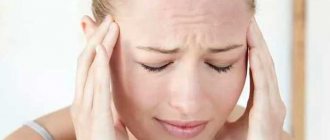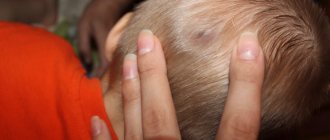Why does congestion occur?
The ear is a complex multi-chamber device, the parts of which are connected by a system of cavities, levers and bones. Sound is transmitted through the contacts of solid objects, and air cavities equalize the pressure between the internal and external environments. If this is not done, there may be a real risk of damage to the eardrum.
But if the secretion from the ear continues, it becomes slipperier and thicker, or it does not maintain temperature, then we use antibiotics during the check. Antibiotic therapy must be effective, the antibiotics deployed must be appropriate to the suspected infectious agent, must be administered in a sufficient dose and for a sufficient time for administration, in addition to improper treatment, in addition to improving the patient's health, cause the unwanted formation of resistant bacteria.
In general, the use of antibiotics for otitis media in children with a common, uncomplicated course is prevented. Conversely, when it comes to a patient where prolonged healing may be expected or other conditions that may complicate otitis media, antibiotics are administered according to the above rules, sometimes at the first examination.
The effect of stuffy ears is the pressure exerted on the eardrum.
This is a temporary hearing loss that occurs because the eardrum loses its mobility and cannot respond to sound waves properly. As a result, a sensation of squeezing occurs in the organ of hearing.
Most often, a person either stops hearing completely for some time, or hears mainly high notes. This effect is often created on an airplane. After a difficult flight, passengers may leave the cabin in a somewhat dazed state, reacting only to sharp sounds.
Medial ear inflammation or otitis media affects a large number of young patients, but can also occur in adulthood. The disease is inflammatory, unpleasant and very painful. The area around the ear is tender and may be slightly swollen and hot.
Especially in very young children, it can sometimes be difficult to recognize the first symptoms of the disease. Your baby may appear irritated, tired, tired or irritated, and the painful ear area will be the first thing that comes to our attention. Especially if the child still does not speak. The inflammation may or may not be accompanied by fever, and if left untreated can cause permanent hearing loss. It can burst at any time of the year, not just during the winter months as mentioned earlier.
Therapy methods
Treatment of infectious diseases is carried out using antibiotics, antiviral and disinfectants, with supportive care. Additionally, vitamin, cardiological and other drugs are administered depending on complications and accompanying symptoms.
Treatment of cardiac diseases is carried out in a hospital as prescribed by a doctor. Neurological pathologies, after a thorough examination of the brain and the entire nervous system, are treated with drugs depending on the disease. Poisoning with substances is urgently treated in toxicology, intensive care or a therapeutic department, with the introduction of an antidote and therapy of the appropriate degree and type of poisoning.
The sulfur plug is removed by an ENT doctor by rinsing the ear canal. Another disease is treated by an appropriate specialist. To carry out high-quality drug therapy, you need to promptly seek medical help at the first appearance of symptoms of the disease.
For toxicosis and pressure changes in pregnant women, special medications are used to restore normal health, without severe harm to the fetus. To treat neurological diseases, when dizziness and blocked ears are used, sedatives and tranquilizers are used. Giving up bad habits will normalize body functions and get rid of such symptoms.
Treating dizziness and congestion is usually easy. You just need to follow the recommendations received exactly. Usually in such situations, cure of the underlying disease helps. For example, if the cause of the painful condition was sudden jumps in blood pressure, then therapy will be aimed at stabilizing the pressure. Or when such symptoms are provoked by ear stones, then actions should be aimed at eliminating them.
In what cases does the ear clog?
The causes of ear congestion may be as follows:
- The effect of ear congestion is characteristic of diseases such as sinusitis, Meniere's disease, and acoustic neuroma. These diseases are diagnosed only by specialists. They also prescribe treatment.
- Formation of adhesions in the eardrums. This may occur due to trauma or an inflammatory disease, such as otitis media. As a rule, in this case, the ears become blocked spontaneously, for no apparent reason.
- Formation of cerumen plug in the ear canal. This plug puts pressure on the ears mechanically, creating a stuffy effect. It is typical to experience ear congestion after swimming. The sulfur plug gets wet and causes a feeling of stuffiness. In this case, you need to go to a doctor who can easily remove the plug.
- Accumulation of water in the ear canal. Most often, a water plug forms when swimming in bodies of water. Water accumulates in the space in front of the eardrum and puts pressure on it.
- Sudden changes in atmospheric pressure. Sudden changes in external pressure cause the eardrum to be pressed into the eustachian tube, which balances the pressure. As a result, a person begins to experience a feeling of pressure. The same effect occurs on an airplane during takeoffs and landings. A person can experience similar sensations when descending into the subway or on a high-speed elevator, as well as when ascending a mountain.
- (eustachitis). Most often, the cause of this disease is inflammatory processes localized in the nose and pharynx. At the same time, the mucous membrane of the tube swells, its lumen decreases, and the pressure inside decreases. The eardrum begins to retract inward, causing ear congestion and pain. In this case, spontaneous internal sounds may occur in the form of pops and clicks.
This is usually a complication associated with rhinitis or other viral upper respiratory tract disease. Medial ear infections can be unilateral or bilateral, affecting one or both ears. The infection enters from the nose and nasopharynx, continues through the auditory tube into the middle ear, and then into the middle ear, where there is inflammation of the mucous membrane, an accumulation of pus or mucus that cannot drain. The ear drum stretches and causes severe pain. The relief occurs only after the drum breaks, spontaneously, in the house or mechanically by a doctor.
A sharp increase in blood pressure is often considered the cause of ear congestion. However, this only happens if there is damage or disease to the ears.
In other cases, when pressure changes, the ears become clogged only hypothetically, since blood pressure should increase by at least 30 units, which happens extremely rarely.
Antibiotic therapy is often used, the temperature subsides and after a few days the discharge stops and the drum stops. If your child's ear frequently bothers him, it is sometimes recommended to remove the tonsils or insert drainage tubes. Unfortunately, this is not necessarily a problem that is permanently resolved.
Middle ear inflammation - treatment and treatment for children
If your child is laughing and you are sure it is indeed an otitis media, there is plenty of advice on how to deal with it at home. Some of them are passed down from generation to generation, and they are guaranteed to work. One of them is recommended to wrap a piece of garlic in gauze or a piece of cloth and put it on the ear. Garlic is reported to "pull out". Don't try this, it may cause burns and you can only take the advice of babies, always with a little reserve.
In inflammatory processes
Inflammatory processes include pathologies of non-infectious and infectious origin, which manifest themselves as an altered state of the tissues of the middle ear. Meniere's disease is considered one of these pathologies. It manifests itself through an increase in fluid pressure in the labyrinth of the middle ear, followed by an inflammatory process and corresponding symptoms.
Symptoms of dizziness and ear congestion are manifested by: otitis media, ear colds, acute sinusitis, influenza, ARVI, etc. The reason is severe intoxication and damage to the tissues of the brain, cerebellum, middle ear, vestibular apparatus, organ of Corti by viruses, bacteria or their toxins .
All infections that affect these areas will always have similar symptoms.
Specific symptoms:
- Flu and ARVI - severe intoxication and headache.
- Labyrinthitis and neuroma - ringing in the ears, loss of coordination of movements, hearing loss.
- Acute sinusitis - congestion in the nasopharynx, severe headaches, fluid in the maxillary sinuses and purulent discharge from the nose.
- Otitis - ringing in the ears and constant congestion of the ear canal, acute headaches and attacks of dizziness.
- Ear cold - buzzing or ringing in the ears, headaches, copious discharge of earwax with pus.
- headache;
- buzzing or ringing in the ears;
- darkening and spots before the eyes;
- nausea and vomiting.
For example, a transient ischemic attack or stroke begins with dizziness and gradually blocks the ears with the addition of symptoms of heart failure. Vegetovascular dystonia (VSD) has a huge range of symptoms, and under certain conditions can cause dizziness and congestion in the ears.
Multiple sclerosis and epilepsy in the initial stages manifest themselves by periodically feeling dizzy and stuffy ears for no reason. If neoplasms appear, any other symptoms may join these symptoms.
If there is inflammation in the body, it is necessary to use antibacterial and anti-inflammatory agents. Drugs of this type should be selected by a doctor, since some of them have an ototoxic effect, and if used incorrectly, the situation can worsen rather than progress in treatment.
If the cause of ear congestion and dizziness lies in the hearing aid, then medications will be prescribed to help improve the blood supply to the inner ear. The most popular drug of this kind is Betaserc.
What to do
Suddenly, without health problems, you first need to make every effort to lose excess weight. To do this, you need to open the auditory tube using swallowing movements. It is for this purpose that candy is handed out to passengers on the plane before takeoff and landing.
If the impact was too strong, the ears may be blocked for several hours or even days. In this case, you should consult a doctor. However, you can try to do a few simple exercises:
Doctors, for inflammation of the middle ear, recommend a resting position, which makes it easier for the child, additionally covering the head with a pillow and putting a warm but dry pad on the affected side. You can iron a clean scarf with a hot iron or use a heating pad. This is important for small children who cannot yet spit on their own, suck out the mucus, and do not make more children spit too much because it also increases ear pain. Then protect the child from drafts and cold.
Blending ears as the main expression
Moderate ear inflammation usually begins with a feeling of some "fullness" in the ear, sometimes described as "water" in the ear. These are the first symptoms. Within a few hours, the patient begins to feel the first stinging pain, fever or headache. The pain may subside and return again. The prickly pity turns into constant bruises and burning pain. Fluid collects in the ear, which pushes against the skin of the drum and causes hearing loss. The disease has already entered into full force.
- Cover both ears with your palms. Rub your ears with your palms clockwise and then counterclockwise. After this, press your palms against the auricle again so that your ears “stick” to your palms, and then sharply pull your hands to the sides. The result is a suction effect, which will create a low pressure in the outer part of the hearing organ for a short time.
- If one ear begins to hear poorly after swimming, you can remove the water plug yourself. Tilt your head to the side so that the deaf ear is down. Press the ear canal with your finger and remove it sharply. Jump on one leg while tapping your deaf ear with your palm. Make a few swallowing movements. The effect of removing the plug will occur suddenly: the water will pour out, and you will hear well again.
- Take a deep breath, close your nostrils tightly with your fingers and exhale forcefully through your nose. You, of course, will not succeed, but this will create increased pressure inside, which will normalize the condition of the eardrum. This exercise should not be done if you have high blood pressure, headache or runny nose.
- For healthy and young people, the solution is very simple - knock out a wedge with a wedge. Go to the gym and give yourself good exercise. Similar advice can be given to everyone else, but only the loads should be adequate to the state of the body.
Medial ear inflammation - piercing
Sometimes, despite the best care, the ear still hurts and does not get any relief.
First, he must assess the stage of inflammation. To do this, use an Otoscope, a device that looks into the ear and scans the external ear canal to detect any changes in the drum. If you arrive on time, the inflammation is not advanced, but at the initial stage the doctor will prescribe special nasal drops and pain drops. If the inflammation has already progressed, the drum should be punctured. This is a very quick procedure, although unpleasant, but for most patients it provides immediate pain relief. The puncture or parathesette of the drum is performed with a special needle. At home, it is necessary to keep the ear canal clean as there may still be hidden discharge, even for a few days.
So at what pressure does your ears clog? The answer to this question is simple - at elevated levels. But where exactly does the pressure increase - inside the ears or outside? In this case, the answer is no longer so clear. A feeling of congestion can occur due to pressure from the inside and outside. And this is understandable: if the pressure increases simultaneously on both sides, the eardrum may not feel this, since for its normal operation the main thing is the same pressure parameters on both sides.
Average ear inflammation without fever?
For this purpose, it is recommended to use salt water, drop it directly into the ear, and then lie on your side and allow it to flow spontaneously onto your clean handkerchief.
Many people mistakenly believe that all inflammatory diseases must go hand in hand with fever. Medial ear inflammation can get completely out of control, but requires prompt treatment. The problem may be recognizing this in a young child or a child who cannot yet talk or explain that something is hurting him. Ear congestion is a symptom that indicates excess pressure on the eardrum from the inside or outside. An unpleasant sensation often occurs during air travel, diving, climbing mountains, or developing rhinitis. An increase in the difference between internal and external pressure on the eardrum leads to tension on the eardrum. As a result, the elasticity of the membrane decreases, which affects the quality of sound signals.
You are a mother and you know your child best. These children sometimes lean towards the painful side, trying instinctively to relieve themselves and find a better position. Sometimes this causes slight swelling of the face. Such children are restless during sleep. If the ear hurts when pulled under the ear or when pressure is applied to the ear cartilage, you are absolutely sure that your child is suffering from ear infections.
If you visit a specialist workplace and your doctor diagnoses otitis media, he or she will likely prescribe special ear drops for your child. Sometimes medications containing paracetamol are recommended for the release of mucus that accumulates in the external auditory canal and against severe pain. Inflammation of the external auditory canal is always treated with medications that prevent further inflammation and relieve pain. To speed up the treatment, it is recommended that the patient sleep on his side, on a firmer pillow, so that the secretion escapes spontaneously from his ear.
A common cause of a feeling of congestion is a sudden change in blood pressure. At what pressure? According to experts, congestion can be caused by both hypotension and hypertension. Due to a decrease or increase in the tone of blood vessels, pathological changes occur in the body, leading to the appearance of an unpleasant symptom.
Chronic inflammation of the middle ear
Sometimes inflammation of the middle ear enters the chronic phase.
Chronic inflammation can cause permanent hearing damage. The most commonly cited cause is often recurrent, untreated or undertreated inflammation. Sometimes it is recommended to use different antibiotics than previously used. In more serious cases, surgery is an option. In young patients, as well as in cases of recurrent inflammation, doctors tend to resort to the option of temporary and possible reintroduction of drainage pipes. This procedure is recommended even if the ear does not hurt, but it is not even good, because there is a trace of infection behind the drum, which will cause inflammation in the future. Parents who are considering chest tubes should know that this is a short surgical exercise under general anesthesia. The tubes are inserted into the ear for only six months. After this time they usually get rid of themselves and the hole in the drum grows.
Diagnosis of pathologies

Diagnosis should be carried out after consultation with a specialist. Anamnesis is collected before the onset of these symptoms and until the present day.
If you suspect cardiac diseases, you need to conduct examinations:
- angiography;
- blood pressure measurement;
- eye pressure measurement;
- fundus examination;
- ECG;
- Ultrasound of the heart.
To identify infectious diseases, smears are taken for Staphylococcus aureus and pathogenic microflora from the mucous membranes. The ear canal and eardrum are examined for changes and purulent discharge.
If there is a history of head injuries, if a concussion is suspected, the following is prescribed:
- consultation with a neurologist and surgeon;
- X-ray of the skull;
- tomography
- feces on worm eggs;
- consultations with specialists of various profiles;
- general blood and urine tests.
If your ears are stuffy and nauseous, you experience dizziness and a feeling of general weakness and malaise, then it is important not to neglect timely diagnosis to prevent future health problems.
Today, medicine in this area is very developed, so there are different ways to diagnose the problem and make an accurate diagnosis:
- Otoscopy is a manual examination of the external ear canal.
- Audiometry is a test of hearing acuity to determine possible pathologies.
- Impendance testing - checking the condition of the eardrum to prevent the occurrence of disorders. The presence of fluid inside the eardrum is also determined.
- Ultrasound examination of the vessels of the head and neck will check whether there are any obstacles to the movement of blood flow.
- X-rays and CT scans of the cervical spine will reveal osteochondrosis.
- An MRI of the brain will make it possible to determine whether there are any disturbances in the functioning of blood vessels, since their occlusion or stenosis (narrowing), as well as torsion and disturbance of pressure in them can provoke many problems and, of course, headaches.
One diagnostic method or several in combination may be prescribed to obtain ideal conditions for determining the root cause of the problem.
Causes
The feeling of congestion in most cases is accompanied by deterioration of hearing and the appearance of autophony, in which a person clearly hears his own voice in his head. If the pressure difference on the eardrum is high, sharp shooting pains, dizziness and a sensation of fluid transfusion in the ear are felt. The main causes of ear congestion include:
Is otitis media infectious?
However, this period of time is sufficient for normalization and regeneration of the ear. Sometimes this procedure is recommended in combination with nasal tonsil removal. Many mothers are often concerned about whether otitis media is infectious and could cause someone else to get sick. Inflammation of the middle ear is not contagious! That is, infections that caused inflammation of the middle ear. Therefore, it is very likely that if there is another child in the family, the infection develops along with him and can spread further and gradually paralyze all family members.
- rhinitis;
- tubootitis.
- hypertension;
- hypotension;
The key reason for blocked ears is a change in pressure, which leads to a decrease in the elasticity of the eardrum. When a sound signal enters the external auditory canal, the ear membrane experiences slight vibrations, as a result of which the sound does not amplify. For this reason, a person experiences an uncomfortable feeling of congestion and a sharp decrease in hearing.
Precautions for otitis media
That's why the family pays to observe alarming hygiene and prevent preventative diseases.
As a precaution, it is recommended to increase the function of the immune system, prevent rhinitis and inflammation of the nasopharynx. The child tenses and gradually increases his resistance. On the other hand, protect your ears from wind, precipitation and water. Which in itself can be difficult. Here, too, well-established: “Babo, laugh!” For larger children, the most important thing is a proper and balanced diet rich in vitamins and minerals.
It is recommended that children be fully breastfed until at least six months of age. During colder months, give children a cap and scarf around their throats and don't need them in crowded rooms. Always avoid smoky and unventilated environments. If your baby has a rhythm, teach him to empty his nose with a sponge and help your little one with a suction cup to prevent inflammation and possible complications with him or other members of your family.
What to do if you feel dizzy and your ears are blocked?
— If dizziness takes you by surprise, then you need to know the simplest and most basic actions that will help you avoid injury. We need to find support so that balance can be restored. This could be a chair or a sofa, or if it happened outside, a bench or tree would do. You just need to remember that you can’t close your eyes and squat - your health will definitely worsen.
- Bring your breathing back to normal, inhale air through your nose and exhale through your mouth, and at the same time try to keep your head straight. A sufficient amount of fresh air plays a very important role, you need to do everything possible for this: unfasten the buttons or loosen the belt.
- Even sucking candy will help relieve such an attack - sucking switches attention. But even if the attack can be relieved, this does not mean that there is no need to go anywhere. The entire course and consequences of the disease depend on how a person treats himself.
— It is very important to quit smoking, drink alcohol and low-alcohol drinks, you need to monitor proper nutrition and avoid stressful situations.
If you adhere to these principles, then perhaps you can forget about dizziness forever.
Salpingootitis
Salpingootitis (eustachitis) is an otolaryngological disease characterized by inflammatory processes in the mucous membrane of the middle ear and the Eustachian tube. The occurrence of pathology is most often due to the development of infection in the upper respiratory tract. When pathogens multiply in the nasopharynx, the Eustachian tube becomes infected, from where pathogens penetrate into the tympanic cavity.
Do you work in a noisy environment, listen to loud music and travel frequently by plane? Then you probably know the unpleasant state that you are “lying on your ear.” Ear lice lasting more than a week should not be underestimated. If it lasts long and gets worse, it can hide an inflammation of the middle ear that interferes with one or more ear cubes behind the usual lie.
Ear lice when traveling by plane
Is it possible to avoid this annoying condition? If you are ahead of your planned health path, you should not experience any major consequences. Beware, however, if you are cold before a long flight and you have a rhythm, the route is better in such cases or just before taking the medicine recommended by your doctor. This will help improve the functioning of the eustachian tube, which balances pressure between the pharynx and middle ear.
As a result of inflammation, the mucous membrane of the auditory tube increases many times over, which leads to disruption of its aeration function. The cells of the mucous epithelium begin to absorb the oxygen remaining in the ear cavity, as a result of which the pressure in the ear sharply decreases. For this reason, the ear membrane is pressed into the tympanic cavity, which leads to a decrease in its elasticity and, accordingly, a feeling of stuffiness.
Prevention of dizziness and ear congestion
There are many diseases that cause dizziness and congestion in the ears, in a calm state and when changing body position, with visible and without visible reasons.
In people between 40 and 60 years of age who sought medical help, it was often discovered that the aging process leads to a decrease in the elasticity of blood vessels and an increase in the sensitivity of the vestibular system to changes in body position and atmospheric pressure. But there are other reasons for these symptoms:
- inflammatory processes in the middle ear and infectious diseases;
- cardiological pathologies;
- neurological pathologies;
- substance poisoning.
When looking for causes, you need to take into account that some non-pathological conditions, in normal health, can cause ear congestion and dizziness:
- avitaminosis;
- pregnancy with toxicosis and vascular disorders;
- great physical activity;
- hypoglycemia;
- lack of sleep;
- lack of oxygen;
- cerumen plug in a narrow ear canal;
- diet;
- stress or fear;
- excessive exercise.
Before you see a doctor, you need to try to independently understand the cause of the disease and prevent recurrence of attacks.
- Constantly monitor your health and be aware of the presence of diseases.
- Eliminate alcohol-containing drinks and cigarettes from your life.
- Maintain a balanced diet. Food should not be too fatty, spicy, sweet or salty. You need to eat more raw fruits, vegetables, berries. Protein found in lean meat and seafood is welcome.
- Limit caffeine intake.
- Get more rest, don’t get overtired, go to bed in a calm and relaxed state.
- Walk more, improve physical activity.
- Do not get emotional, avoid stressful situations, debriefings, conflicts.
- Maintain drinking regime. A healthy person needs to drink about two liters of pure water without gas per day.
You need to remember that as soon as alarming symptoms appear, you must contact a medical facility. After all, the signs considered give a signal about the development of more serious ailments.
Almost every person has experienced dizziness (vertigo). Many people do not attach importance to this, since they experience this condition only once or twice in their lives.
Only a doctor can determine why your ears are blocked and your head is dizzy. He will carefully analyze the symptoms and make a diagnosis. Once the cause is determined, treatment will be prescribed. A timely visit to the doctor will help avoid the development of serious diseases.
- 1.1.1 Vegetovascular dystonia
- 1.1.2 Migraine manifestations
- 1.1.3 Rhinitis
- 1.1.4 High blood pressure
- 1.1.5 Low blood pressure
- 1.1.6 Diseases of the spine causing vascular pathologies
- 1.1.7 Malignant neoplasms in the brain
- 1.1.8 Side effects of drugs
- 1.1.9 Pregnancy
- 2 What to do if your ears are blocked and you feel dizzy
- 3 Diagnostics
- 4 Treatment
- 5 Prevention
Rhinitis
When do ears become clogged and what pressure contributes to the onset of the symptom? Rhinitis (runny nose) is one of the most common causes of changes in internal pressure on the eardrum, resulting in a feeling of stuffiness and fluid transfusion in the ear. Inflammation of the nasopharyngeal mucosa, provoked by viruses or bacteria, leads to tissue swelling. As a result, the lumen in the Eustachian tube, which connects the middle ear cavity with the nasopharynx, narrows.
Important! When you have a runny nose, you should not force air into your nasal passages to clear them of accumulated mucus. A sudden increase in pressure on the ear membrane can damage it.
The auditory tube performs a ventilation function, i.e. helps equalize external and internal pressure on the eardrum. With the development of rhinitis, the internal diameter of the canal narrows, as a result of which the pressure in the ear significantly decreases, which leads to the pressing of the eardrum into the ear. This becomes the key reason for the unpleasant sensation.
Effect of pressure on the ears
Many people suffer from heart and vascular diseases. In this case, the fundamental factor becomes the level of blood pressure.
A person’s well-being, the exacerbation of the disease - all this depends on weather changes (that is, there is a direct connection between a person’s internal pressure and atmospheric pressure).
Changing barometer readings affects not only sick people, but also healthy people.
In a weather-dependent person, the ears become blocked at both high and low pressure. In medicine, there are the concepts of “meteopathy” and “meteolability”, which mean a person’s constant sensitivity to weather changes.
For meteorologists, the change of cyclones and anticyclones is disastrous; their well-being gives serious concern to doctors.
External
What poses the greatest danger to the ears is a high or low atmospheric front; at what pressure they are laid; when you hear ringing or extraneous noises in your ears - these are questions that are often asked in the press and on the Internet.
External pressure depends on the specific region and time of year.
A sharp increase in the atmospheric front is a difficult test for hypertensive patients. At this time, cases of hypertensive crises become more frequent.
A low atmospheric front means rain or snow, wet damp weather, gray skies, low clouds. The arrival of a cyclone is the time when the condition of hypotensive patients worsens.
There are several aspects of the influence of external pressure on a person’s hearing and general condition:
- A small change in pressure does not adversely affect the hearing aid.
- The pressure at the starting and ending points can be very different (but provided that it changes smoothly, no painful conditions arise).
During a quiet walk up a not too high mountain or downhill, the hearing aid does not experience any stress - changes occur gradually. Then the body has time to adapt to the changed situation.
Painful conditions occur with sudden changes in pressure. In this case, the eardrum is pressed deep into the tympanic cavity. In turn, pressure also increases in the Eustachian tube and, as a result, blood circulation is disrupted and swelling of the mucous membrane lining the Eustachian tube develops.
Adaptation of the body occurs faster in stable, stable weather. Problems begin when frosts give way to thaws, when heat is replaced by prolonged rains. Such changes occur several times per season.
A sharp change in weather or climate is accompanied by congestion in the head - temporal or occipital - region. With such sudden changes, the ears become blocked and headaches occur, even in those people whose blood pressure is normal.
Internal
Internal pressure is an individual physiological indicator, which depends on the force with which the blood flow presses on the walls of blood vessels.
The onset of hypertension is considered to be an increase in values to 140/90. Critical values are 200/100.
Low blood pressure (BP) starts at 100/60.
During a hypertensive crisis, due to uneven blood flow to the middle ear, the nerve endings are excited. That is why arterial hypertension is accompanied by noise and ringing in the ears.
With hypotension, a different picture is observed. Blood accumulates in the dilated veins, small vessels stretch, putting pressure on the hearing analyzer.
Arterial hypertension
Hypertension (arterial hypertension) is a disease characterized by increased blood pressure. According to experts, a common cause of the disease is circulatory disorders, which can be caused by a number of provoking factors:
When a patient's ears become blocked due to pressure, this indicates vasospasm, as a result of which blood circulation is impaired. The narrowing of the lumen in the vessels causes poor oxygen supply to the tissues, as a result of which the air in the ear cavity becomes rarefied, i.e. a low vacuum is created. In addition to ear congestion, signs of the development of hypertension will include:
- memory impairment;
- headache;
- swelling of tissues;
- nosebleeds;
- fast fatiguability.
Important! Untimely reduction of high blood pressure can cause a hypertensive crisis, heart attack or stroke.
Other factors
There are other reasons that cause these unpleasant symptoms:
- It happens that you get stuffy ears and feel dizzy during pregnancy.
- Hypotension or arterial hypertension. In this case, conditions are observed in which patients may experience pressure surges.
- Ear stuffiness and dizziness in stressful situations.
- Lack of sleep.
- Processes of a physiological nature. So, before any important event, the level of adrenaline may jump, and symptoms of a stuffy ear appear. What to do at home? More on this later.
- Excessive physical activity. If a person is just starting his studies, the blood vessels do not have time to rebuild and strengthen, so tinnitus and slight dizziness appear.
- Too strict diets.
Change in external pressure
According to experts, an increase in external atmospheric pressure on the eardrum is one of the causes of congestion. The eardrum is an elastic membrane that is impermeable to air. It is innervated by the nerve endings of the tympanic nerve, which originates in the glossopharyngeal branch.
Excessive pressure of air masses on the membrane leads to its deformation, as a result of which it does not resonate sounds coming from the outside. As a result, a weak signal is communicated to the auditory ossicles, which is subsequently received and processed by auditory receptors. As a result, a person hears a “choked” sound, which indicates ear congestion.
Untimely equalization of internal and external pressure on the ear membrane causes barotrauma.
A sharp increase in atmospheric pressure may be associated with:
- air travel;
- diving under water;
- climbing the mountains.
Critical deformation of the eardrum can cause shooting pains.
Treatment
After an examination (otoscopy, initial examination, audiogram, CT and MRI), the doctor will prescribe the necessary treatment. If there is a suspicion of cancer, a blood test, skull scan, vascular ultrasound, and x-ray are prescribed. In some cases, you will need to take antibiotics, in others - vasodilators or chemotherapy, surgery or simple observation, it all depends on the root cause of the pressure in the ears.
For older people, it is recommended to monitor the level of internal pressure, take measurements several times a day, and take vitamin complexes. Moderate physical activity and proper nutrition will allow you to avoid unwanted health problems.
Unfortunately, many people have hearing problems. And the older a person gets, the more likely the likelihood of acquiring one or another “ear” pathology becomes. According to doctors, about 30% of the entire world population has some kind of hearing problems, and modern life - with its stress, fast pace, existence in a noisy city - largely contributes to this.
One of the most common complaints that ENT doctors and audiologists have to listen to is the patient’s feeling of pressure on the ears from the inside. It is this question that we will consider in the article: we will find out what causes this symptom and what methods of therapy can eliminate it.
Let's find out what diseases and pathologies can cause feelings of pressure in the ears from the inside.
- Migraine
is the most common and most common cause of feeling internal pressure in the ear area. The symptoms of migraine are extremely unpleasant and, moreover, long-lasting. Increased intracranial pressure can also cause a feeling of squeezing in the temples and ears. - Otosclerosis
. This disease is characterized by increased growth of spongy bone tissue in the inner ear. This growth, if present, will certainly cause a feeling of pressure and fullness in the auditory organs. - Atherosclerosis of blood vessels located in the brain.
This pathology of lipid metabolism in blood vessels may well cause a feeling of pressure. Vascular diseases leading to the appearance of this symptom can be different: in addition to atherosclerosis, an aneurysm and other pathologies are possible. Almost all diseases of the blood vessels located in the neck and head can lead to a persistent or periodic feeling of squeezing in the temples. The so-called neuroma, or tumor of the auditory nerve, sometimes also causes the described symptom. - With hypertension
(high intracranial pressure), it goes without saying that this pressure will be felt in the ear area. Colds and sinusitis can also cause this symptom. - Otitis media in the acute or chronic phase
can also lead to this problem. Inflammatory processes, possibly of an infectious nature, may be one of the possible causes of this symptom. Inflammation can be caused by otitis media or other diseases. Most often, if this is the reason, a feeling of pressure from the inside in the ear area will occur already at the last stage of the disease, when purulent otitis media leads to perforation (rupture) of the eardrum. In this case, the feeling of squeezing will also be accompanied by severe pain in the ears. - Osteochondrosis of the cervical vertebrae.
In this case, the feeling of pressure occurs due to microtrauma of the blood vessels, which leads to osteochondrosis.
The feeling of pressure can, in addition to the serious ones listed above, also have such a simple and banal cause as a wax plug in the ear. It is easiest to eliminate such a cause, but it is better to do it under the supervision of a specialist.
Taking certain medications may also cause a feeling of fullness in the ears from the inside.
For example, the antibiotic Gentamicin has this effect. In this case, if such a symptom appears, you will most likely have to change the medicine.
In the video it puts pressure on the ears from the inside:
In addition to the above reasons, a feeling of squeezing in the ear area from the inside can also be caused by such everyday external reasons as frequent listening to loud music, a long telephone conversation, etc. factors. Sometimes loud background sounds can cause a feeling of pressure from inside the ears.
This article will help you understand what this disease looks like and how it should be treated.
But what is better than Otipax or Candibiotic, and where to use them, is described in this
What analogues of Otof drops currently exist, and what their names are, is described in this article:
In what case it is worth using, and how effective they are, is described in this article.
Recommendation: for normal well-being and to prevent damage to the eardrum, you should avoid listening to loud music. Sometimes even a single visit to a rock concert can cause a feeling of squeezing in the temples, let alone systematically listening to such music.
Hypotension
Can my ears get clogged with low blood pressure? Hypotension is less common than arterial hypertension, but it can cause blocked ears. Low blood pressure is caused by cardiovascular diseases, insufficient vascular tone, significant blood loss, depression, neuroses, etc. According to statistics, hypotension most often occurs as a result of deterioration in vascular tone. This leads to thinning of the capillary walls, as a result of which their permeability increases. For this reason, swelling of the mucous membranes of the ENT organs, in particular the Eustachian tube, increases. Reducing its lumen will inevitably lead to the formation of a vacuum in the cavity of the middle ear, resulting in a feeling of fullness in the ears.
If low pressure clogs the ears, this indicates the presence of stagnant processes in the vessels. To eliminate the problem, the heart muscle begins to contract more intensely, as a result of which the upper, i.e., increases. systolic pressure. The increase in the difference between the upper and lower pressure is called pulse pressure. If its readings exceed 40 mm Hg. Art., this will lead to damage to the cardiovascular system.
What to do?
If your ear suddenly becomes clogged, you can try to eliminate the symptom yourself. It is known that the mouth of the Eustachian tube opens during swallowing or yawning, which facilitates the flow of air into the tympanic cavity. In this way, it is possible to equalize the external and internal pressure on the eardrum, which will lead to the disappearance of the unpleasant symptom. How to do it?
There are several simple exercises that are recommended to be performed during air travel or travel on fast trains:
If the feeling of congestion does not go away within a few days, you should seek help from an otolaryngologist. The symptom may indicate the development of more serious diseases, such as Minière's disease, cardiovascular diseases.
Treatment
Let's find out exactly how to treat this unpleasant symptom.
The first thing you should do if you experience pressure from the inside of your ears is to see a doctor. As we have already established, the reasons for such pressure in the ears can be different, therefore, as is clear, the treatment required is also different. When the cause of the symptom is eliminated, the symptom usually goes away on its own.
First you need to visit an ENT specialist
who will examine the ears for inflammation, otitis media, colds and other factors that affect overall well-being. The presence of injuries to the eardrum, its possible perforation, and various pathologies of the internal auditory organs can also be detected at this stage. It may also turn out that the feeling of fullness in the ears is caused by a banal wax plug, which the doctor can immediately remove. It is likely that this method will already return you to normal health, and the feeling of pressure will disappear.
The ENT doctor will also conduct a special examination - an audiogram, which will help identify existing problems with auditory perception. After examination and making an accurate diagnosis, the doctor prescribes treatment appropriate to this diagnosis.
Typically, complex therapy includes:
Treatment varies depending on the cause of the disease, and may also include antibiotics, anti-inflammatory drugs, cold medicines, vitamins and other medications. If the cause is serious enough that it cannot be eliminated with medication, an appropriate operation may be prescribed.
It is necessary to strictly follow all the doctor’s instructions in order to prevent the development of a chronic disease or any complication. If the ENT doctor was unable to identify the cause of internal pressure in the ears, then he will have to undergo a full comprehensive examination of the body: pass the necessary tests, and visit doctors of other specializations.
Maybe










